
LinkedIn X-ray search helps you find profiles outside your network using Google. Many outreach experts use LinkedIn X-ray search to pull 100+ ideal client profiles per hour using advanced Google queries.
What Is LinkedIn X-Ray Search?
LinkedIn X-Ray Search is a smart workaround that lets users find LinkedIn profiles via external search engines like Google, instead of relying on LinkedIn’s internal search bar. It’s especially useful for sales development managers, recruiters, and project managers who want to bypass LinkedIn’s limitations and unlock deeper access to all the LinkedIn profiles, even those outside their network.
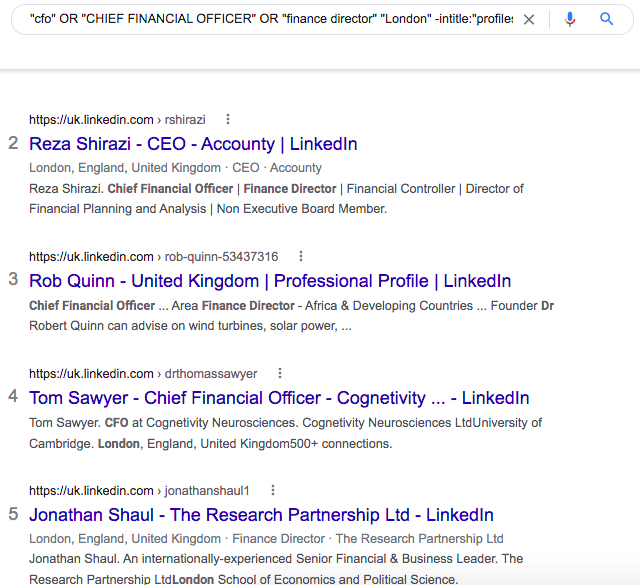
Unlike the classic search bar within LinkedIn, which requires you to be logged in and applies filters based on your connections and account level (Free, Premium, Sales Navigator), X-Ray search works from the Google search bar using Boolean search operators and search strings. It allows for more flexible, targeted, and improved search results

What’s the Difference Between X-Ray Search and Normal LinkedIn Search?
- LinkedIn search filters limit how many profiles you can view per day unless you have a premium plan.
- X-Ray searches don’t require you to be logged in, so they don’t count toward daily view limits.
- LinkedIn hides certain data from users not in your network — but Google indexes many of these pages.
- Normal search shows only profiles from your network tier, while LinkedIn X-Ray can show search profiles beyond your immediate connections.
LinkedIn X-Ray search helps uncover leads and candidates that LinkedIn might hide behind paywalls or network limitations.
The downside is that the profile information might be limited, and users can also choose to block their profiles from being indexed by search engines — in that case, Google won’t display them in search results.
How to Do a LinkedIn X-Ray Search on Google?
You simply use Google with a special Boolean search string like this:
site:linkedin.com/in “project manager” “New York” “gmail.com”
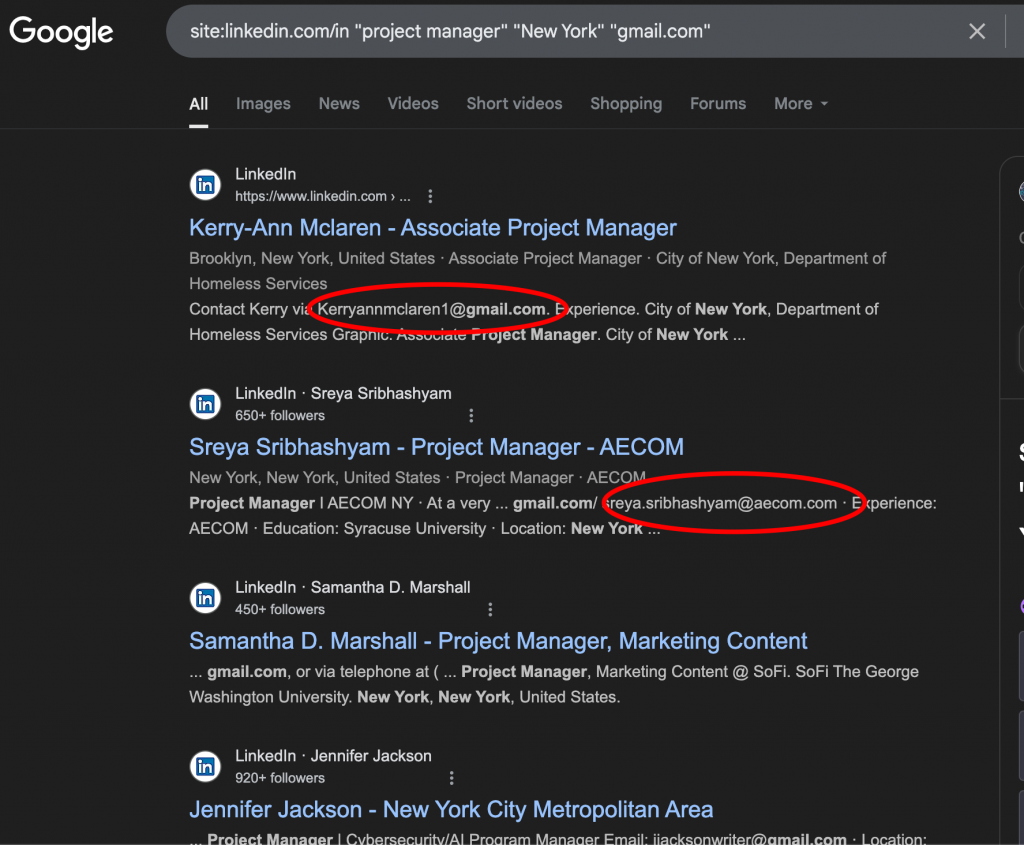
This tells Google to search only LinkedIn profile URLs (/in), containing the keywords “project manager”, location “New York”, and only results with Gmail addresses.
LinkedIn shows email addresses only to 1st-degree connections. To make an email visible to everyone (including search tools), a user must enable that option in their account settings — and most people don’t. So the results of scraping emails from profiles are usually quite limited.
Tools like Recruitment Geek automate this process. You just fill in the fields, and the tool creates the Boolean string for you. Some Chrome extensions even let you open these results directly without triggering LinkedIn’s view limits.
What LinkedIn Shows and Hides from Google?
LinkedIn allows Google’s search algorithm to index public profile data, which includes:

- Name
- Job title
- Location
- Summary and experience (if made public)
- Some contact info (if listed publicly)
But LinkedIn hides:
- 3rd-degree connections (without premium)
- Full contact details (unless public)
- Endorsements and recommendations
- Network insights and connections
Still, through LinkedIn X-Ray search, you can access and search profiles that are otherwise hidden from view when you’re logged into LinkedIn, especially if you use other search engines beyond Google, like Bing or DuckDuckGo.
LinkedIn Xray Search Operators (Cheat Sheet)
Want to find LinkedIn users, hiring managers, or people with a specific job title without logging in? Use LinkedIn X-ray search with Google and Boolean logic to access LinkedIn accounts via search engines. This cheat sheet helps you master that skill
Google Search Operators
These operators tell Google where and what to search — essential for scanning LinkedIn search results externally.
LinkedIn X-ray works best when combined with Boolean operators for precision.
| Operator | What It Does | Example | Result |
| site: | Limits search to a specific website | site:linkedin.com/in | Only personal profile URLs |
| intitle: | Finds pages with words in the title | intitle:”product manager” | Pages where “product manager” is in the title |
| inurl: | Filters pages with keywords in the URL | inurl:linkedin.com/in “marketing” | LinkedIn profiles with “marketing” in the title |
| “” | Forces exact match | “sales development manager” | Finds that exact job title |
| OR | Includes either of two terms | “hiring manager” OR recruiter | Includes profiles with either phrase |
| – | Excludes a keyword | site:linkedin.com/in -jobs | Removes job listing pages |
| * | Acts as a wildcard or unknown word | “* at Google” | Finds unknown job titles at Google |
✅ Pro Tip: Combine multiple operators for precise targeting.
Boolean Search Operators for Advanced Filtering
Boolean logic lets you filter smartly by using logical connections in your search queries. This is especially powerful for recruitment tools like Recruitment Geek or manual sourcing.
Sales teams report up to 3x more qualified leads when combining LinkedIn X-ray search with Boolean operators.
| Operator | Description | Example |
| AND | Includes both terms | “project manager” AND “New York” |
| OR | Includes either term | “hiring manager” OR “team lead” |
| NOT | Excludes a term (- in Google) | “recruiter” NOT “freelancer” → use -freelancer in Google |
| () | Groups terms together | (recruiter OR sourcer) AND “Berlin” |
| “” | Exact phrase match | “customer success manager” |
Use these combinations to narrow your search to current employer, network connections, or all the positions that meet your criteria.
- 🔍 Search people in Germany with job title: sales manager
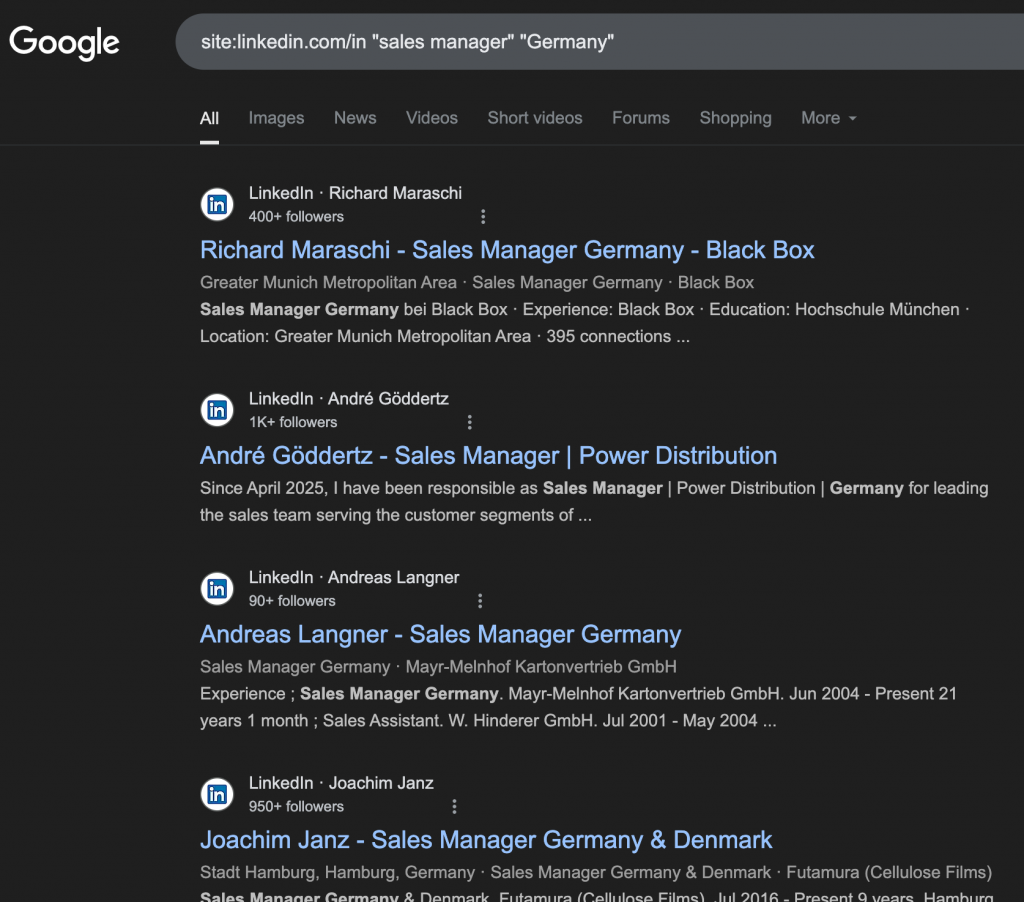
site:linkedin.com/in “sales manager” “Germany”
- 👔 Find hiring managers at Google in New York
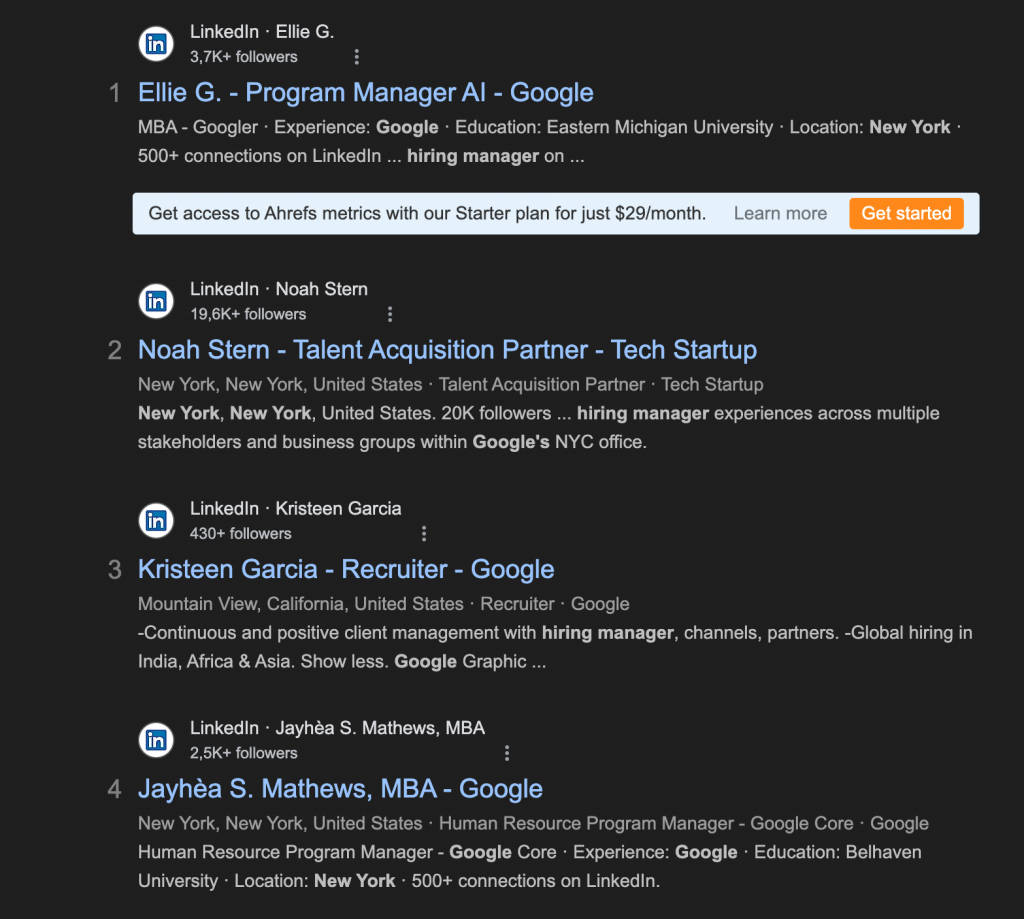
site:linkedin.com/in “hiring manager” “Google” “New York”
- 💡 Search LinkedIn users in IT, excluding freelancers

site:linkedin.com/in (“software engineer” OR “developer”) -freelancer
- 📇 Look for profiles outside your LinkedIn network
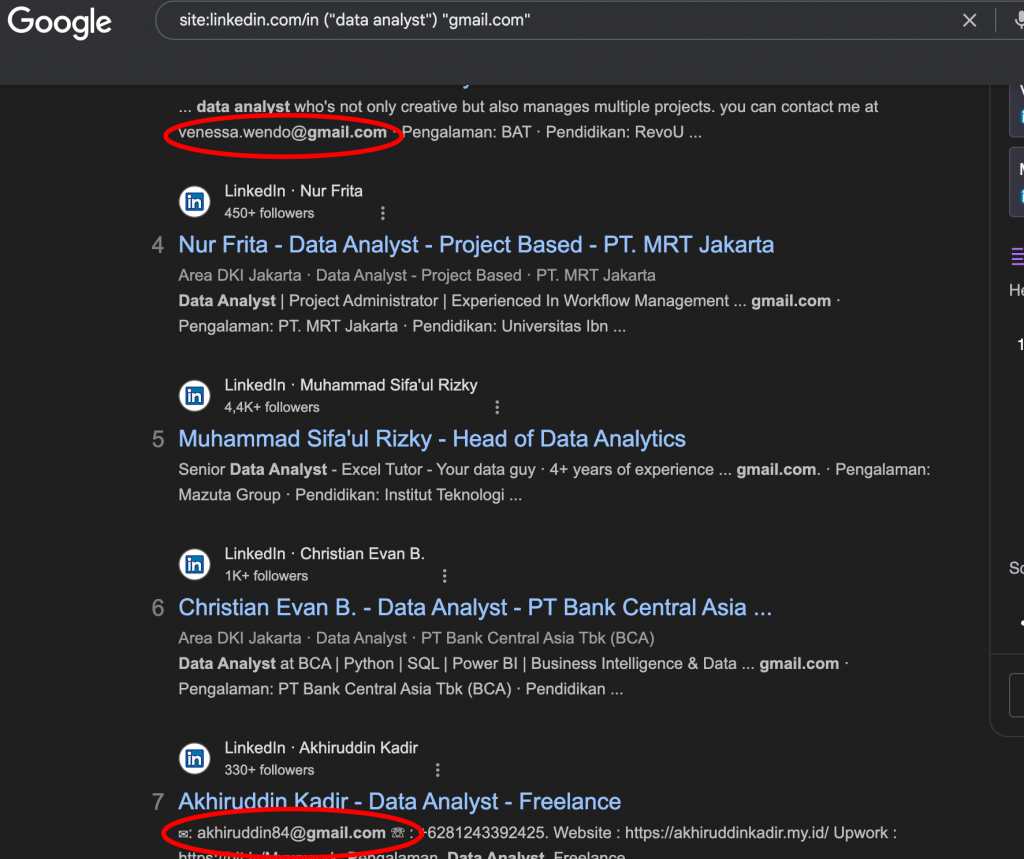
site:linkedin.com/in (“data analyst”) “gmail.com”
Common Mistakes to Avoid
| Mistake | What Happens | Fix |
| Using LinkedIn’s internal filters instead of Google | Limited results | Use site:linkedin.com/in |
| Not using quotation marks | Google finds unrelated results | Wrap job titles in “” |
| Forgetting exclusions | Irrelevant job listings appear | Use -jobs to remove listings |
| Searching while logged in | View limits apply | Log out to avoid restrictions |
| Using Boolean syntax directly in Google | Doesn’t always work as expected | Use Google-friendly syntax: -, OR, “…” |
Use “gmail.com” or “email” in queries to find contactable profiles.
Use job-related keywords like “current employer”, “project manager”, or “marketing lead”.
Combine network relationships terms like “2nd connection” only inside LinkedIn; Google doesn’t recognize connection levels.
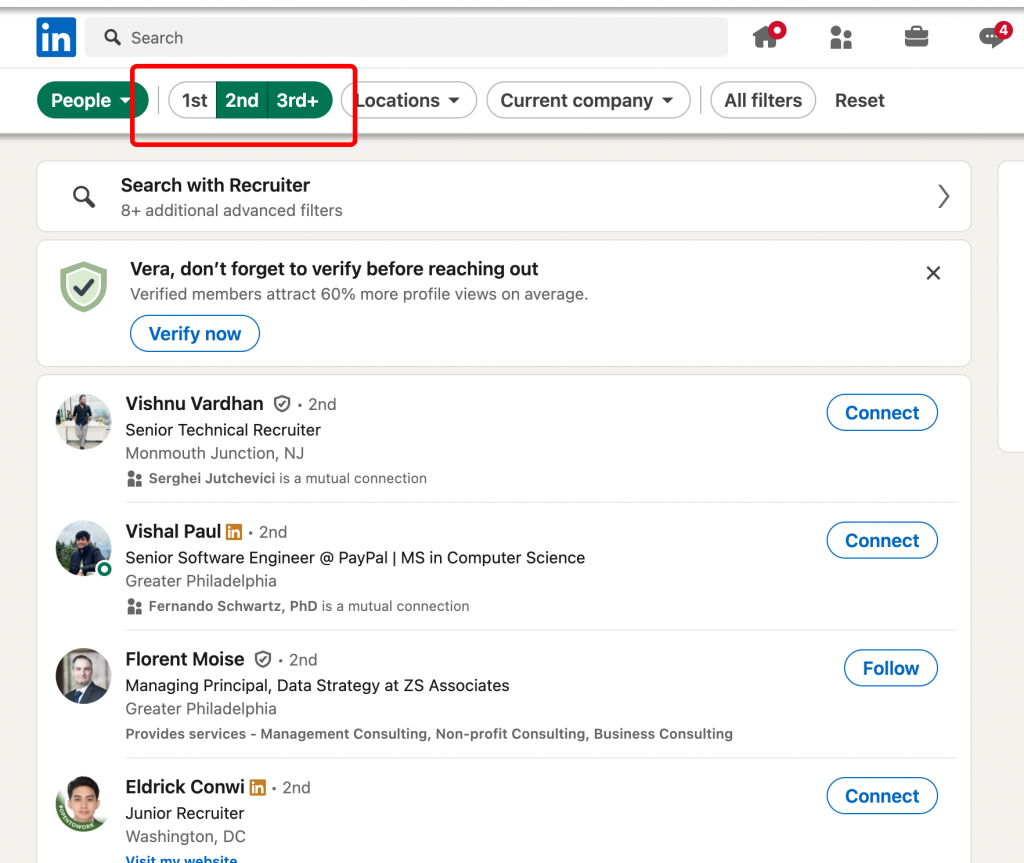
For multiple words, always use quotes to ensure relevance: “marketing specialist” instead of marketing specialist.
Why People Use LinkedIn X-Ray Search
LinkedIn’s built-in search is powerful — but LinkedIn X-Ray Search helps users go beyond its limitations. Whether you’re sourcing candidates based on job titles or trying to find leads outside your network, LinkedIn X-ray search offers serious advantages.
Here’s why it’s still a must-have method in 2025 — especially for recruiters, sales reps, and lead-gen specialists.
Bypass LinkedIn’s Search Limits
Recruiters use LinkedIn X-ray to bypass connection limits and access hidden talent.
When using LinkedIn directly, you’re limited by:
- Number of profile views
- Search filters based on account type
- Visibility of 3rd-degree or out-of-network connections
Using Google and boolean strings in a LinkedIn X-ray search lets you find pages and a person’s profile even if you’re not connected — and without hitting those frustrating LinkedIn limits.
LinkedIn also shows profiles outside your 1st-degree connections, but mostly from the 2nd and 3rd circles. With Google, you can find people who aren’t even in your extended network.
Using LinkedIn X-ray search, recruiters can scan over 500 million public profiles via Google without logging into LinkedIn
Example:
site:linkedin.com/in “head of operations” “Amsterdam” -jobs

This finds relevant profiles without logging in, helping you bypass LinkedIn’s built-in caps and view positions manually that would otherwise be hidden.
Unlike native LinkedIn search, X-ray methods allow access to profiles set to “private mode” or outside your network.
Find 3rd-degree and Out-of-Network Profiles
Standard LinkedIn search often hides 3rd-degree profiles or blocks you from seeing full names and details. But a LinkedIn X-ray search using company names, other keyword filters, and location details reveals far more — even if you’re not connected.
💡 Try:
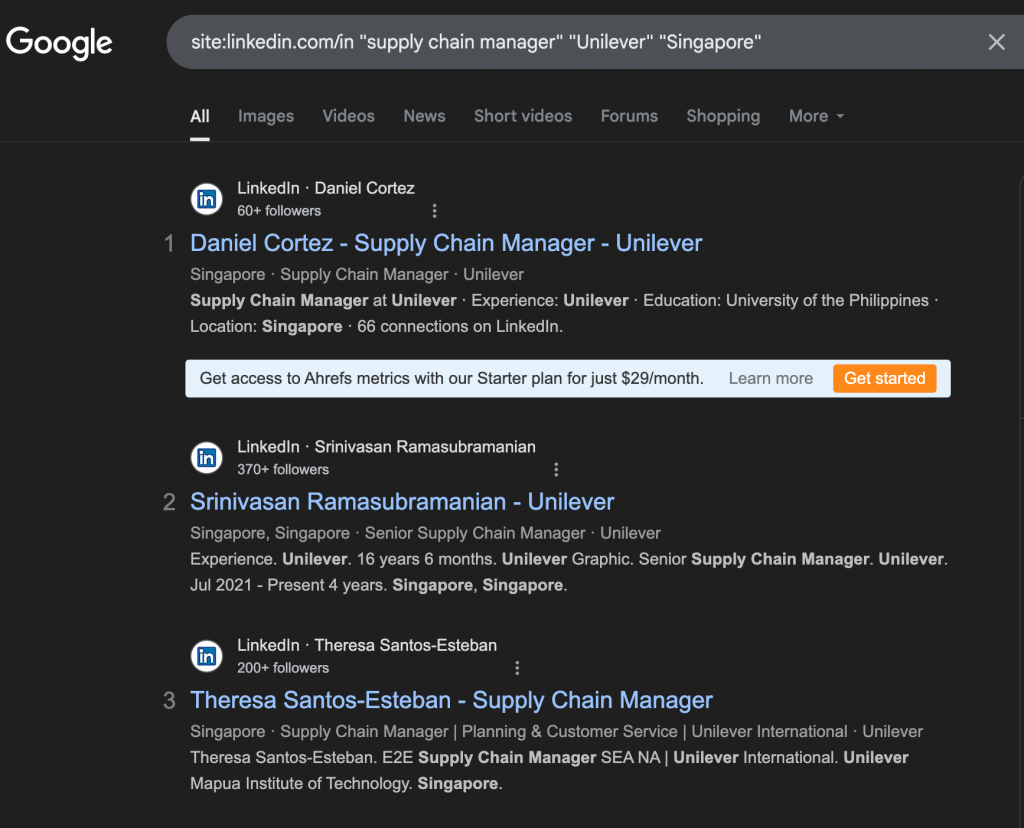
site:linkedin.com/in “supply chain manager” “Unilever” “Singapore”
This works even for hidden connections, helping you reach the best candidates faster.
Search Without Logging In
One of the top reasons people use LinkedIn X-ray is the ability to search when not signed in. This avoids search limits, doesn’t count towards your view quota, and allows bulk lookups using pre-built queries.
- You avoid limits on how many times you hit enter
- You can target exact match phrases without LinkedIn guessing what you meant
- You don’t need LinkedIn Premium to find great profiles
For instance, you can use:
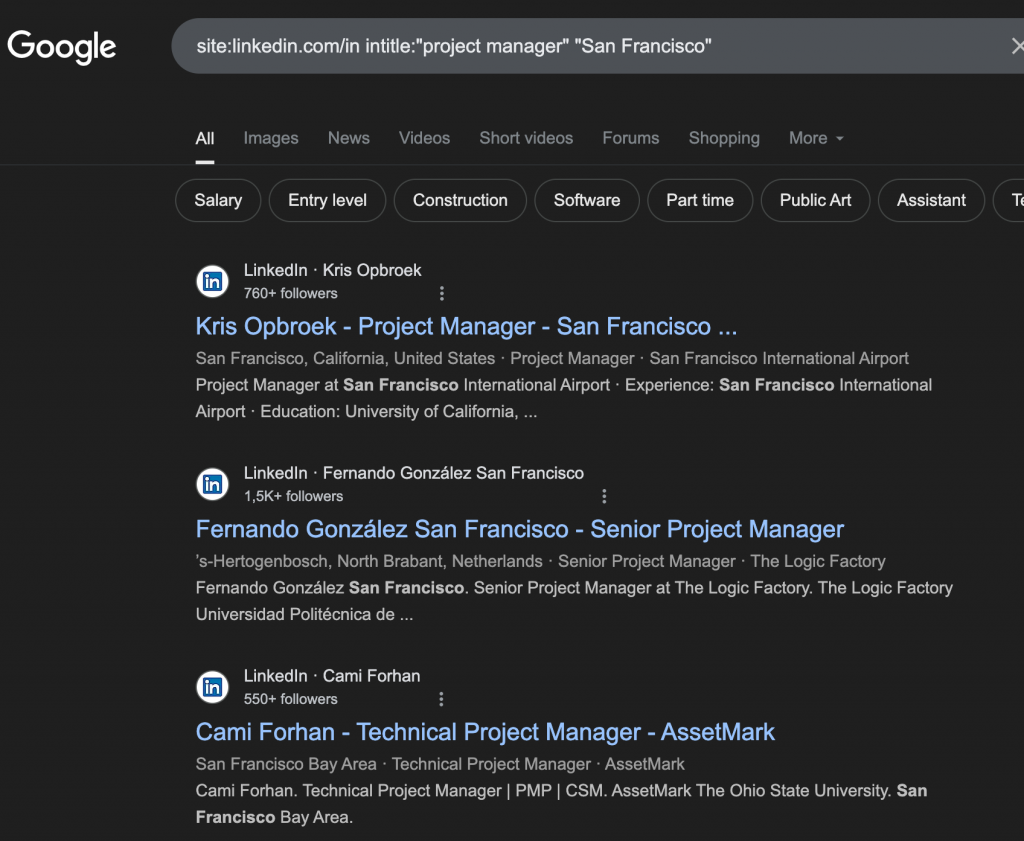
site:linkedin.com/in intitle:”project manager” “San Francisco”
…and find right candidates without logging into your LinkedIn account.
Mastering LinkedIn X-ray can drastically improve your sourcing efficiency.
Save Time Filtering Manually
If you’re sourcing dozens or hundreds of profiles, manual filtering on LinkedIn is time-consuming and inefficient.
With LinkedIn X-ray, you can:
- Skip LinkedIn’s drop-down filters
- Use missing words and multiple job variations (like “business analyst” OR “data analyst”)
- Search with location, company, title, and even public email clues (e.g., “gmail.com”)
This means you can build a complete list of relevant prospects in minutes — especially helpful if you’re working with similar jobs or need to identify multiple profiles fast.
Problems with the Manual X-Ray Search Method
While LinkedIn X-Ray Search on Google is a powerful trick, using it manually has some major downsides. If you’re relying on the site: operator and boolean strings to find profiles — you’re probably spending too much time and leaving better tools on the table.
Requires Time and Skill
Manual LinkedIn X-Ray search isn’t beginner-friendly. You need to:
- Learn how to write boolean strings
- Know how to combine keywords for the most accurate results
- Constantly tweak your queries to see more search results
Example:
site:linkedin.com/in “marketing director” AND (“Berlin” OR “Munich”) -jobs
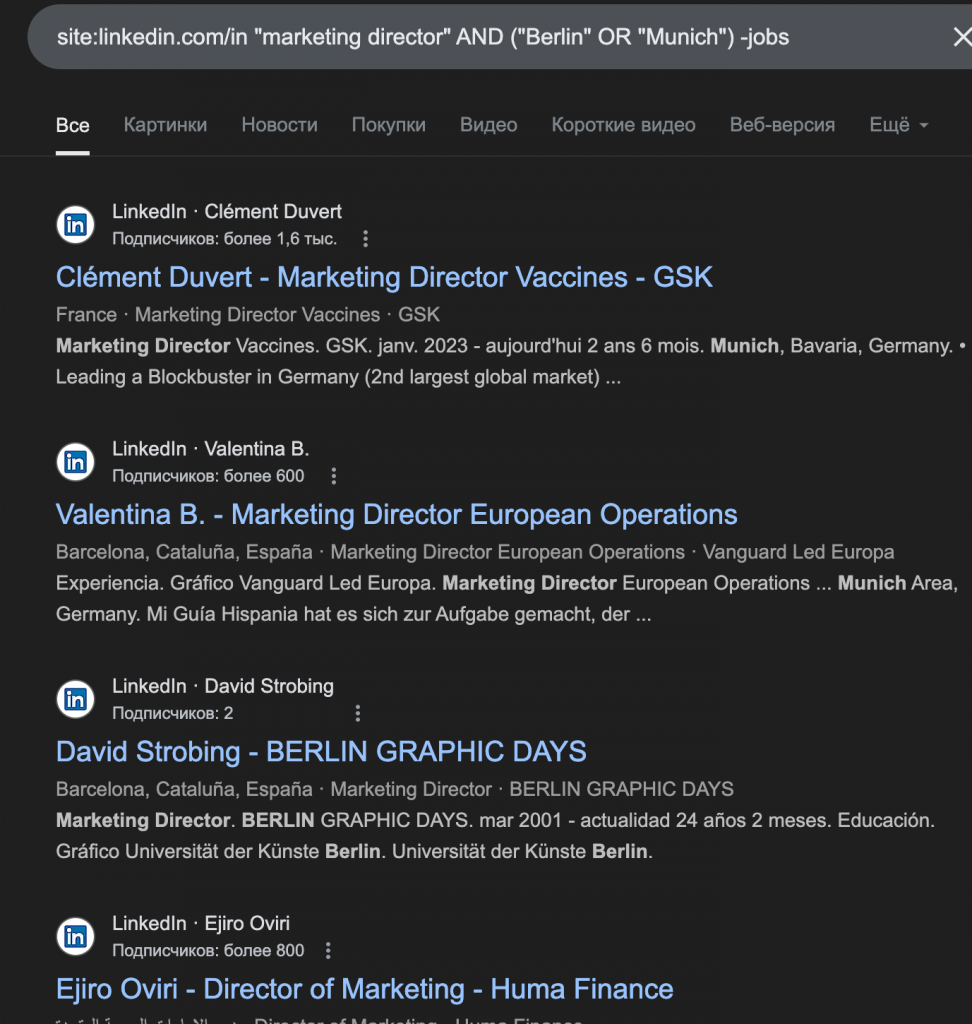
Even small errors can return irrelevant pages — and if you’re not skilled, you’ll miss the best candidates or leads.
Limited Filters
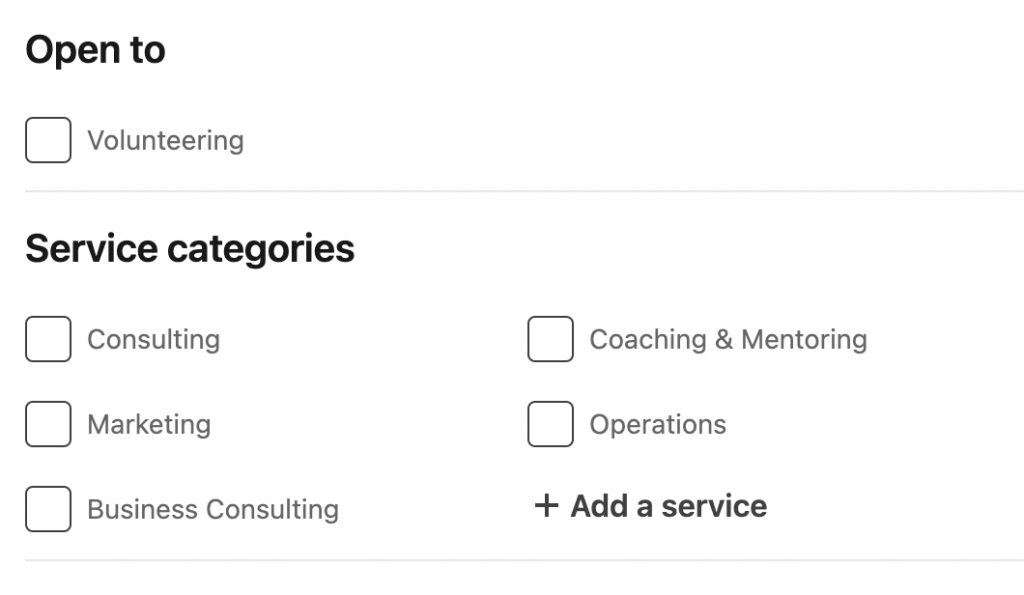
With LinkedIn X-ray search, you can find profiles filtered by job title, location, or industry — even if you’re over LinkedIn’s monthly search limit.
Google indexes the entire page, so when searching by keywords, you might get irrelevant results.
For example, if you’re searching for “London,” you might find someone currently based in the U.S. just because one of their past jobs was in London. Or you might come across someone listed as a CEO, when in fact they were a CEO three years ago and now work as a tech director.
Unlike LinkedIn’s built-in filtering tools, Google doesn’t let you place filters like current employer, industry, or language in a structured way. That means:
- You can’t filter by current company unless you manually add it to your string
- You often get outdated or unrelated profiles
- You waste time reviewing web pages that aren’t relevant
Can’t Easily Export or Scale
Manual search doesn’t scale well. Sure, you can find profiles for a small task, but:
- There’s no way to export a clean list
- You can’t automate the process for outreach
- You’re left with screenshots or copy-pasting links — not ideal for teams
This makes it ineffective for salespeople, recruiters, or marketers running ongoing campaigns.
Doesn’t Integrate with Your CRM or Campaigns
Let’s say you manage to build a list manually — what’s next?
- You can’t sync it with HubSpot, Pipedrive, or any campaign tool
- There’s no connection to email finders, CRM fields, or auto-sequences
- You lose time jumping between tools and pages
For those running outreach or lead generation at scale, this becomes a real bottleneck.
A Smarter Alternative: Linked Helper’s Automated Search Scraper & Outreach
Getting started is easy. Just download Linked Helper — installation is fast, and you’ll get 14 days of full-featured access without even entering card details. No risk. Maximum power.
#1 Start with a Ready-Made Campaign Template
You can choose from ready-made campaign templates based on your goal — whether it’s growing your network, sending invites, warming up leads, or building awareness. Alternatively, you can start from scratch.
Every campaign is linked to an internal CRM where all the profiles and data are saved, so your efforts are never lost. Whether you’re liking profiles, sending follow-ups, or doing both — your funnel starts here.
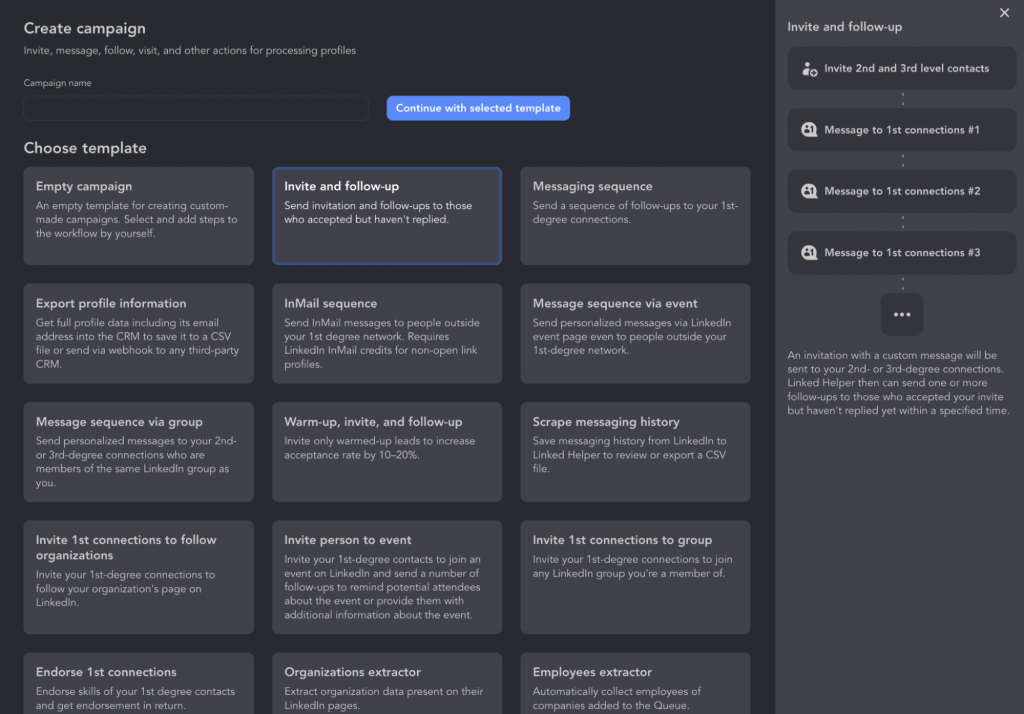
#2 Go to the Search Page
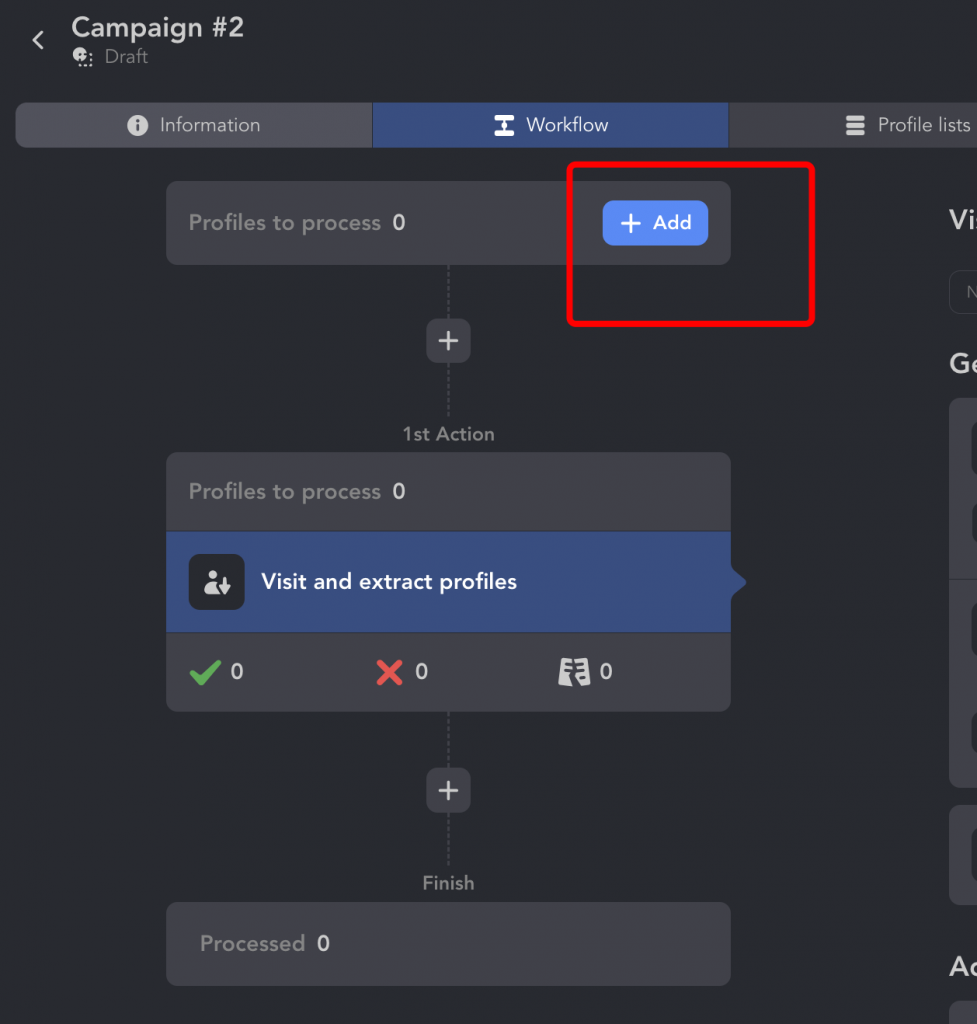
On the Search Page, you define your audience. Use any LinkedIn search (Basic, Sales Navigator, Groups, Events, or Recruiter). Boolean logic is supported to exclude unwanted results.
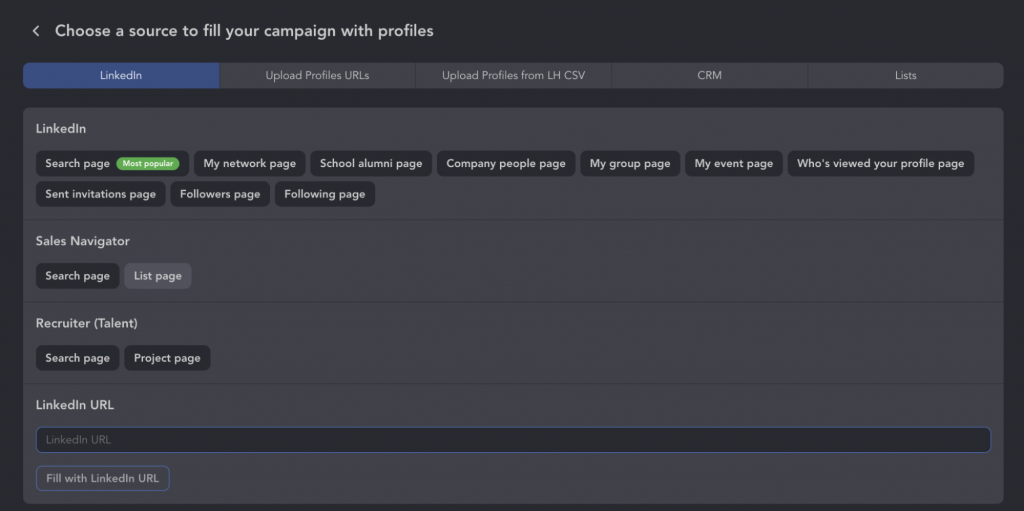
#3 Collect Profiles on Autopilot
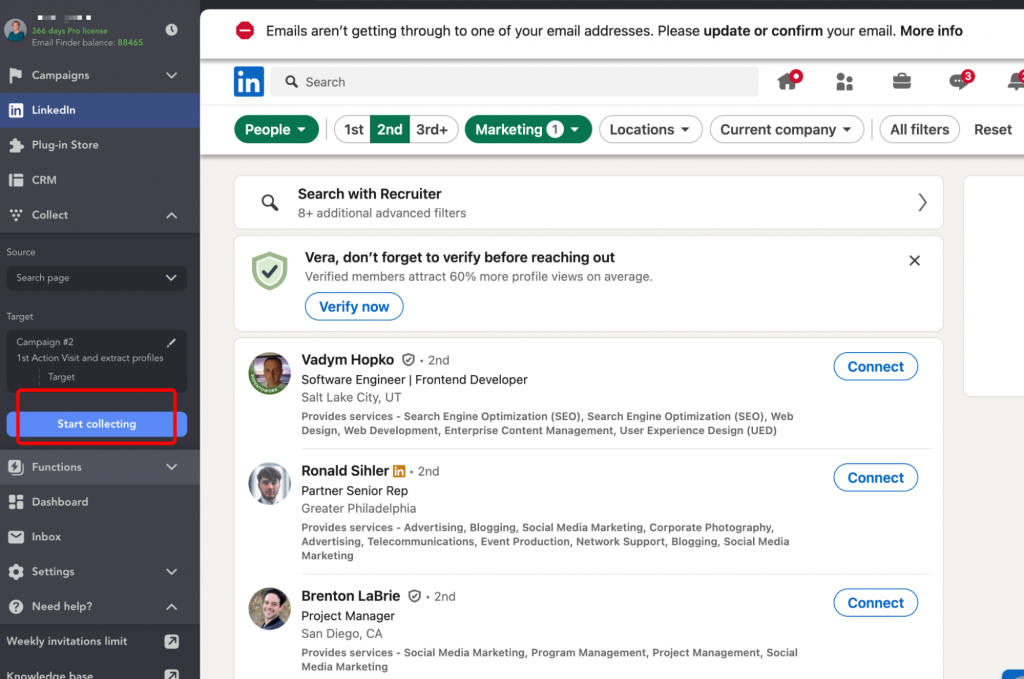
Once your filters are set, just hit Start collecting — and Linked Helper will:
- Parse up to 1,000 profiles per search request
- Store them directly into your CRM
- Visit profiles and extract public info
- Gather emails with integrations like Snov.io or Apollo or internal Email Finder (even if they’re out-of-network)
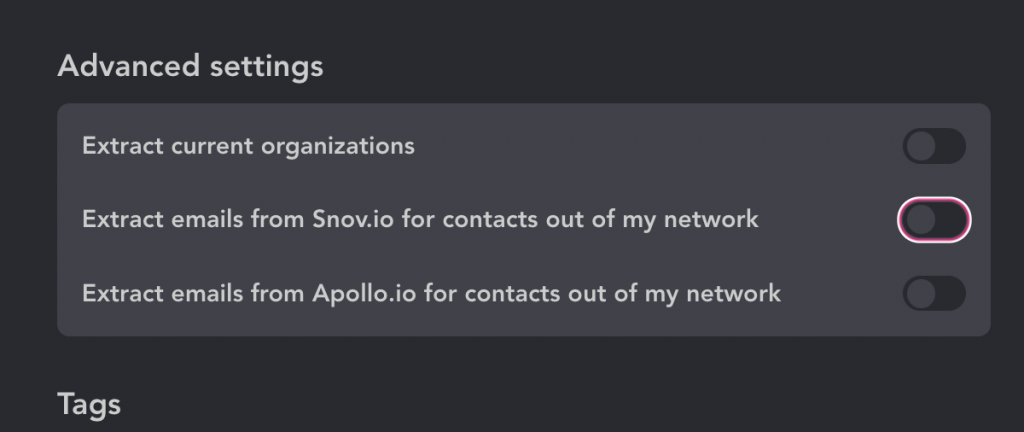
No manual work. No copying and pasting. You can rest — Linked Helper builds your database for you.
#4 From Search to Outreach: Automate the Whole Funnel
To begin processing profiles:
The scraping from search will take about 5–10 minutes, and after that, you’ll need to manually start the campaign.
Hit Start — and Linked Helper takes over.

It will:
- Visit each profile
- Search and collect emails
- Transfer data to CRM
- Start moving leads through your funnel
Unlike browser extensions, Linked Helper doesn’t just scrape — it engages. You’ll see all collected profiles in the “Profile List” section, and can even download them before visiting.
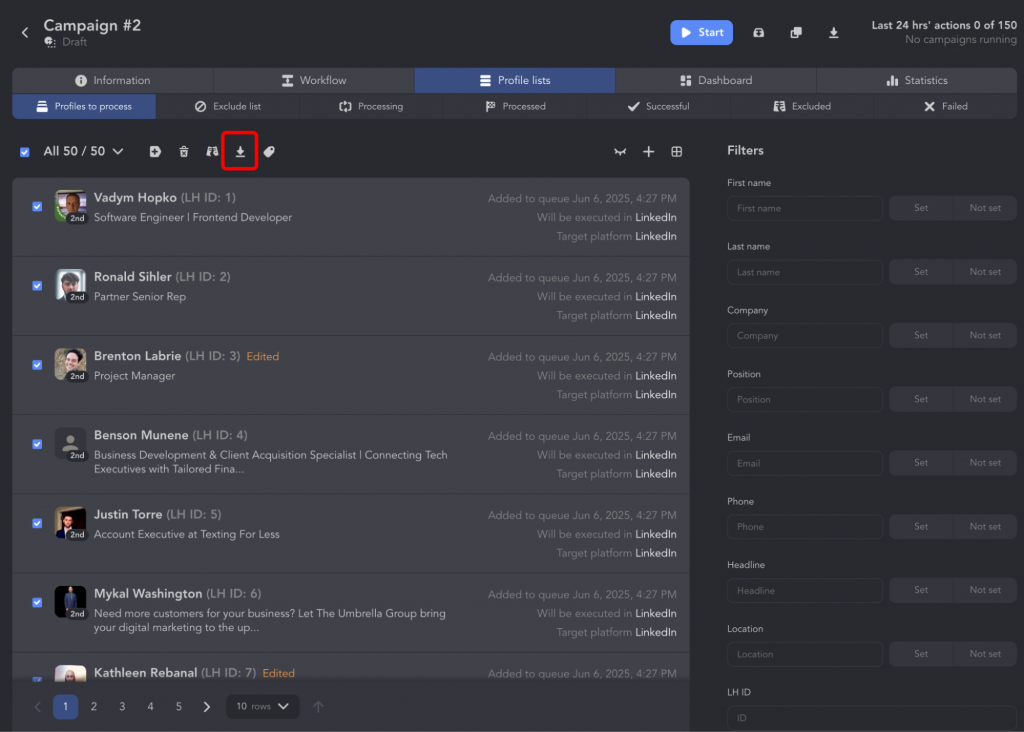
Plan once, automate forever:
- Put likes to warm up leads
- Wait 1–2 days
- Send a tailored message
- Follow up automatically
- Invite to group/event
- Nurture with bulk messages
Each action can be delayed, sequenced, and customized — like a real human assistant, only more efficient.
#5 Replace 5 Tools with One: Export, Filters, Messages, CRM
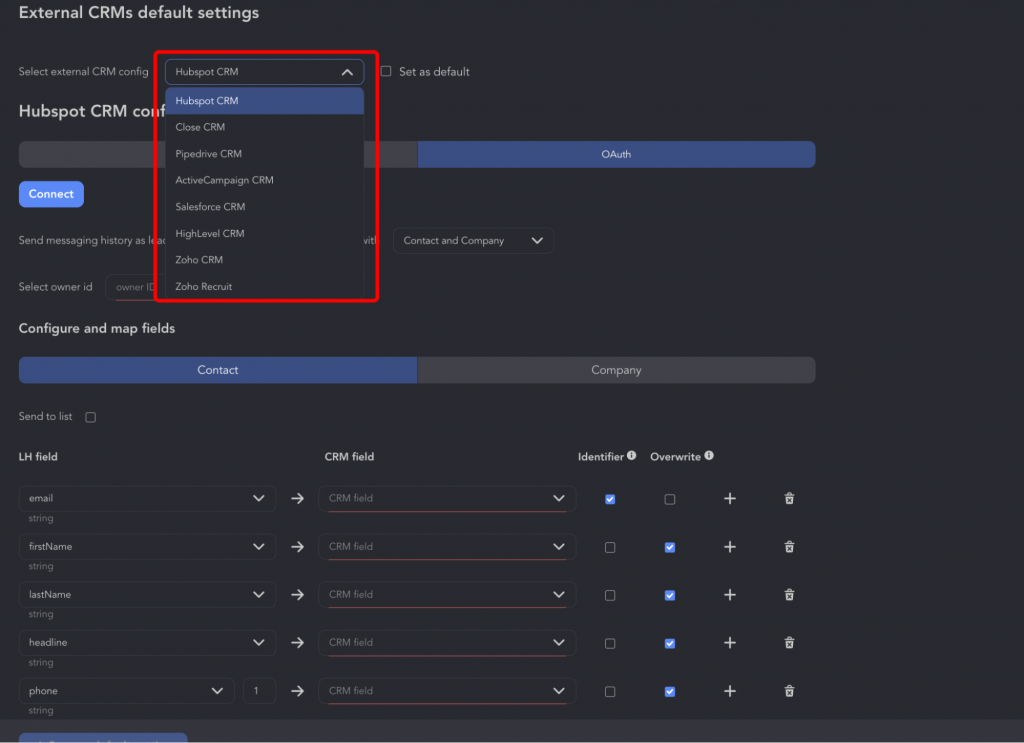
With Linked Helper, you’re not limited to search. You can run your entire outreach process through one campaign:
🛠 Replace 5+ Tools with One:
- Export Contacts
- Advanced Filters ( Job Seeker, Open Profile, Hiring)
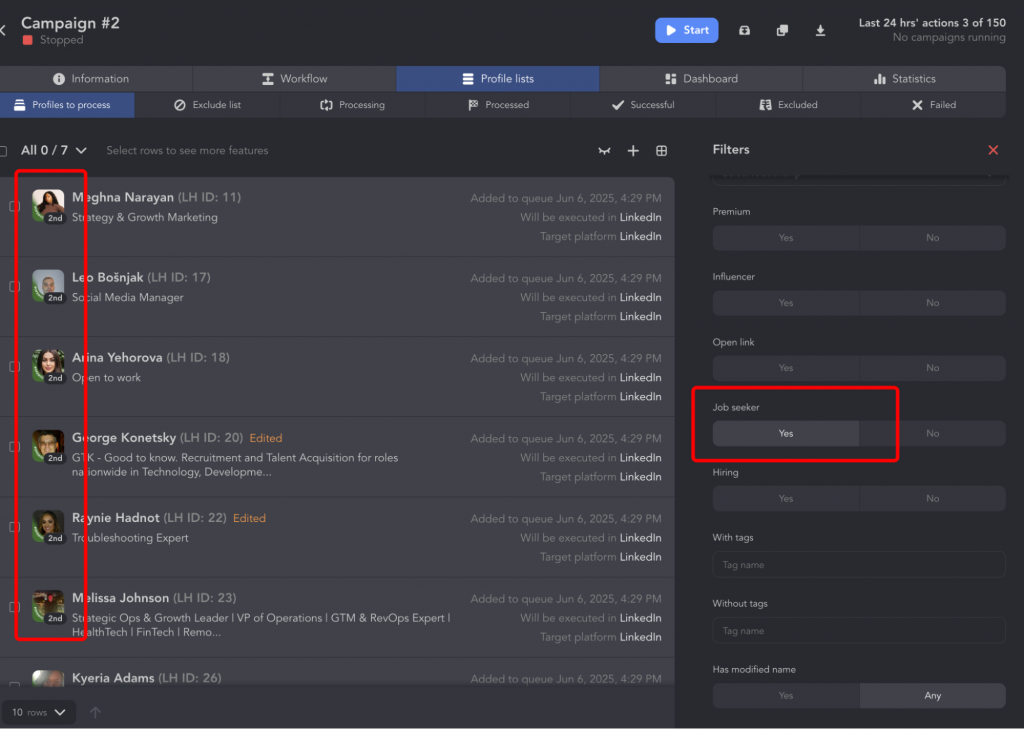
- Bulk Messaging
- Built-in CRM
- Direct CRM Integrations & Webhooks
📩 Write Personalized Bulk Messages
Social selling is about personal connection, not spam. Use Linked Helper’s variable strings (name, job title, mutual contacts) to personalize each message. You can even attach video or voice notes for extra impact.
📆 Run Event Campaigns
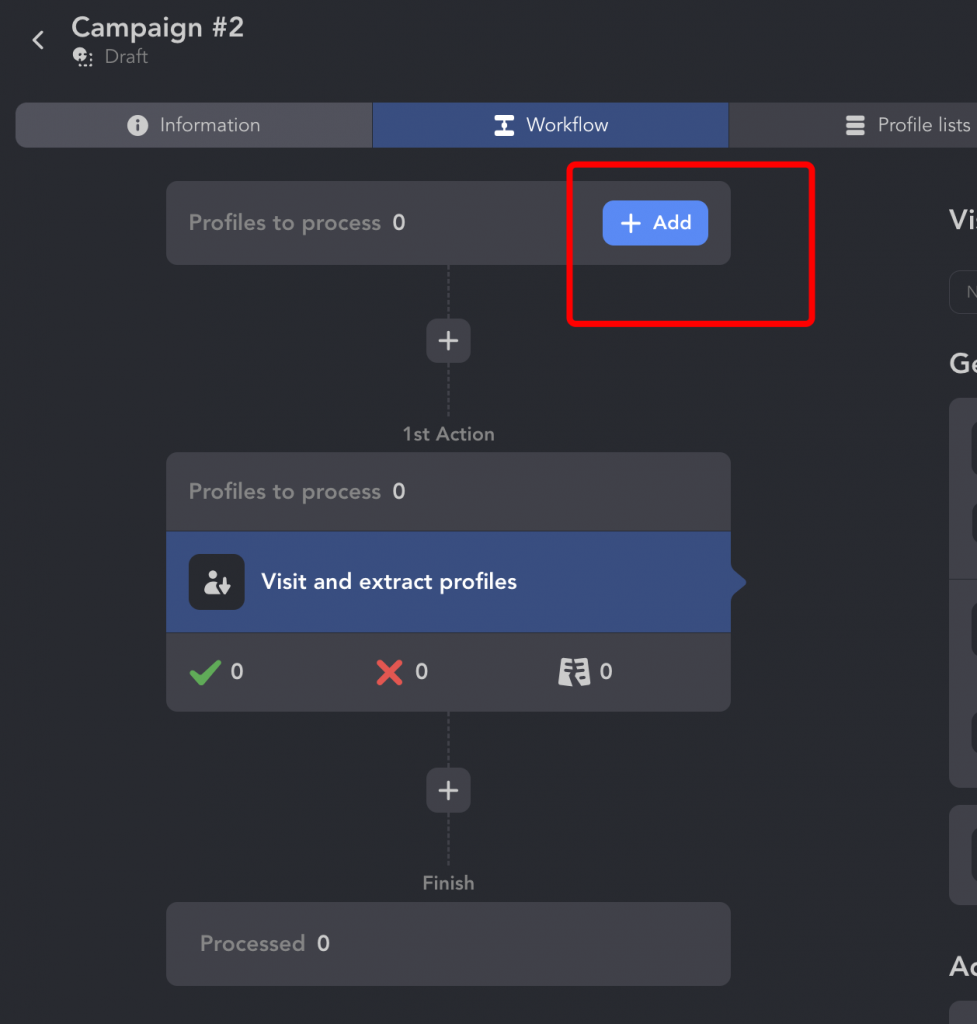
Invite users to events and groups automatically — multiply your reach 5–10×. You can extract attendee lists and continue nurturing them with personalized messages.

Linked Helper doesn’t stop at names. It collects:
- Public LinkedIn URLs
- Job Titles & Companies
- Emails (via integrations)
- Other contact details (via PAS – Profile Aggregation Service)
And yes — even without profile visits in some cases.
Forget spreadsheets. No more tab chaos. All your data is structured, searchable, and exportable.
Linked Helper is not just a scraper. Not just a messaging bot. Not just a CRM.
It’s an entire LinkedIn marketing suite built to help you:
✅ Grow your network
✅ Warm up cold leads
✅ Automate outreach at scale
✅ Export data to your sales pipeline
✅ Do the work of 5+ tools with one dashboard
While other tools solve a single problem, Linked Helper automates the whole funnel — making it the smarter, more scalable solution.
Final Thought
LinkedIn X-ray search gives you access to profiles outside your network, but unlike Linked Helper, it doesn’t save data or automate outreach — it’s just a glimpse, not a system.
“If you want more sales, stronger partnerships, or faster hiring — Linked Helper is your assistant that never sleeps.”
While LinkedIn X-ray helps you find public profiles through Google, Linked Helper takes it further by storing, filtering, and engaging with those leads in one seamless workflow. Download it now. Try it free. See what a real LinkedIn automation system looks like.
It’s not just an alternative — it’s the next level.